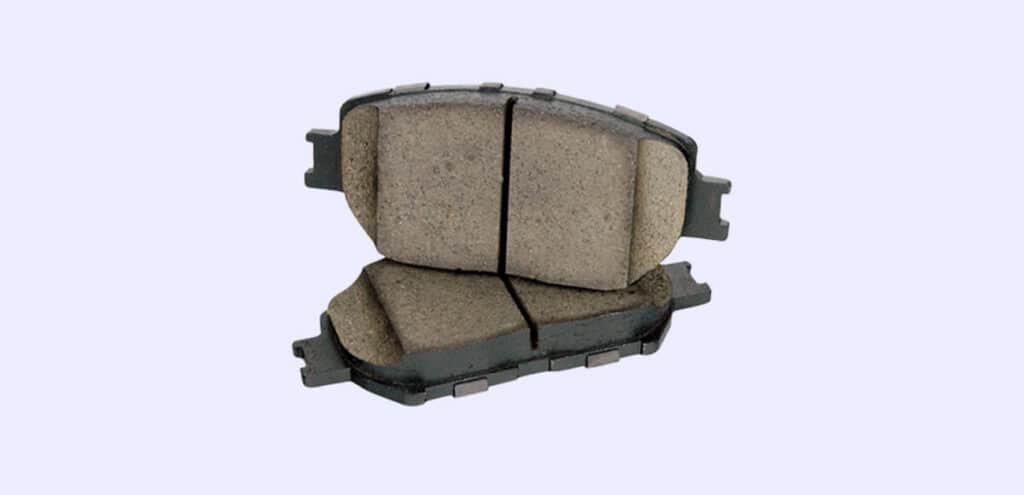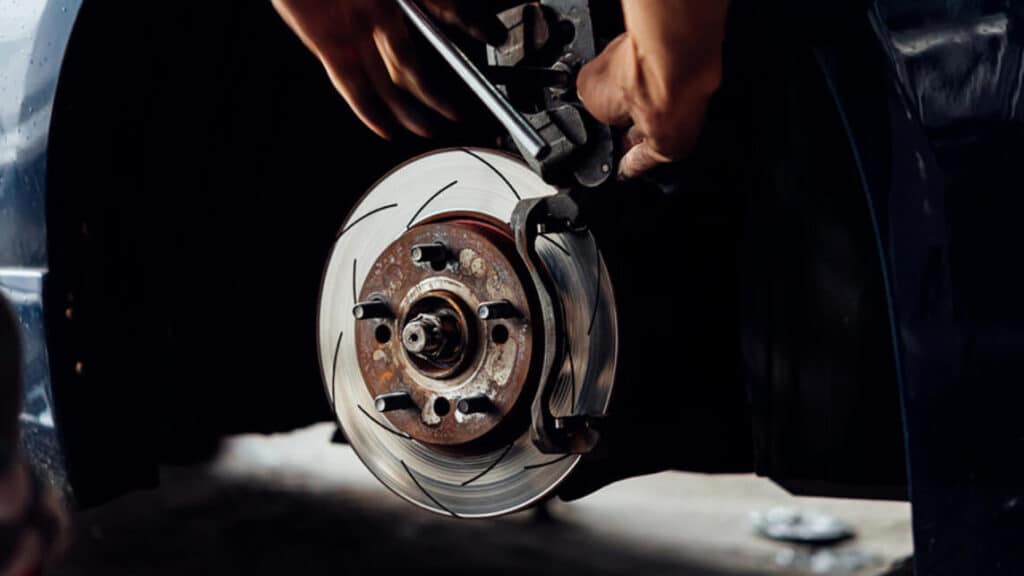Understanding Ceramic Brake Pads
Brake pads play a crucial role in a vehicle’s braking system, providing the friction necessary to slow down and stop the vehicle. There are various brake pad materials available, each with its unique characteristics and benefits. Ceramic brake pads are a popular option for their performance and longevity. This article will discuss the pros and cons of ceramic brake pads and help you determine if they are worth the investment for your needs.
How Ceramic Brake Pads Differ from Other Brake Pad Materials
There are three main types of brake pad materials: organic, semi-metallic, and ceramic. Each has its unique composition, which affects performance, wear, and cost.
Organic Brake Pads: Organic brake pads are made from a mix of fibers, fillers, and binders, with a small amount of metal. They are known for being cost-effective, quiet, and easy on rotors. However, they typically wear faster and may not perform as well under extreme conditions.
Semi-Metallic Brake Pads: Semi-metallic brake pads are composed of a blend of metals and other materials. They offer better heat dissipation and overall performance than organic pads but can be noisier and produce more brake dust.

The Advantages of Ceramic Brake Pads
• Reduced Noise and Vibration: Ceramic brake pads are known for their quiet operation. The ceramic material reduces noise and vibration, providing a smoother and more comfortable driving experience.
• Less Brake Dust Production: Ceramic pads produce less brake dust than other materials, keeping your wheels cleaner and reducing maintenance.
• Enhanced Braking Performance: Ceramic brake pads provide consistent braking performance in various driving conditions, including high-speed and high-temperature situations.
• Longer Lifespan: Ceramic brake pads typically last longer than organic or semi-metallic options, reducing the need for frequent replacements and lowering long-term maintenance costs.
The Disadvantages of Ceramic Brake Pads
• Higher Cost: Ceramic brake pads are generally more expensive than organic or semi-metallic options. The initial investment can be higher, but the long-term benefits may offset the cost.
• Potential Rotor Wear: The harder ceramic material can cause increased rotor wear over time. However, this can be mitigated with proper break-in procedures and regular maintenance.
• Limited Performance in Extreme Conditions: While ceramic pads perform well in most driving conditions, they may not be the best option for extreme cold or heavy-duty applications like towing or racing.
Factors to Consider When Choosing Brake Pad Materials
• Driving Style and Conditions: Consider your typical driving conditions and style when selecting brake pad materials. For example, if you frequently drive in stop-and-go traffic, a quieter and dust-free option like ceramic may be beneficial.
• Vehicle Type and Performance Requirements: Your vehicle’s weight and performance requirements can influence the best brake pad material. Heavier vehicles or those with high-performance needs may benefit from the enhanced braking capabilities of ceramic pads.
• Maintenance and Replacement Costs: Consider the long-term maintenance and replacement costs associated with different brake pad materials. While ceramic pads may be more expensive upfront, their longevity can save money in the long run.
Are Ceramic Brake Pads Right for Your Vehicle?
Ceramic brake pads can be an excellent choice for many vehicles, offering a balance of performance, noise reduction, and longevity. However, it’s essential to weigh the pros and cons and consider your driving habits, vehicle type, and budget before making a decision.
Tips for Maximizing the Benefits of Ceramic Brake Pads
Proper Break-In Procedure: Ensuring optimal performance and longevity for your ceramic brake pads requires following the correct break-in procedure. This process typically involves a series of gradual speed reductions and cooling periods between stops, allowing the pads to bed in properly and facilitating an even transfer of friction material onto the brake rotors. Adhering to the recommended break-in procedure can help prevent brake issues such as squealing, uneven wear, and reduced braking performance.
Regular Brake System Maintenance: To fully enjoy the benefits of ceramic brake pads, performing regular brake system maintenance is essential. This routine should encompass inspecting your brake pads, rotors, and other components for wear, in addition to maintaining the cleanliness of your brake fluid and ensuring it remains at the appropriate level. Staying diligent with brake maintenance can prolong the life of your ceramic brake pads, enhance their performance, and contribute to the overall safety and efficiency of your braking system.
Alternatives to Ceramic Brake Pads: Weighing Your Options
If you’re unsure whether ceramic brake pads are the right choice for your vehicle, consider the alternatives. Organic brake pads may be a suitable option if you prioritize a lower initial cost and quiet operation. Semi-metallic brake pads can provide better heat dissipation and overall performance, especially for heavier vehicles or those with high-performance needs.
The Importance of Quality Brake Components for Safety and Performance
Regardless of the brake pad material you choose, investing in high-quality components is crucial for ensuring safety and performance. High-quality brake pads, rotors, and other parts can reduce the risk of accidents, provide consistent braking performance, and prolong the lifespan of your braking system.

Conclusion: Determine if Ceramic Brake Pads Are Worth the Investment for Your Needs
Ceramic brake pads offer numerous benefits, including reduced noise and vibration, less brake dust production, enhanced braking performance, and a longer lifespan. However, they also come with potential drawbacks, such as a higher initial cost, potential rotor wear, and limited performance in extreme conditions. By carefully considering your driving habits, vehicle type, and budget, you can make an informed decision on whether ceramic brake pads are the best choice for your needs.
